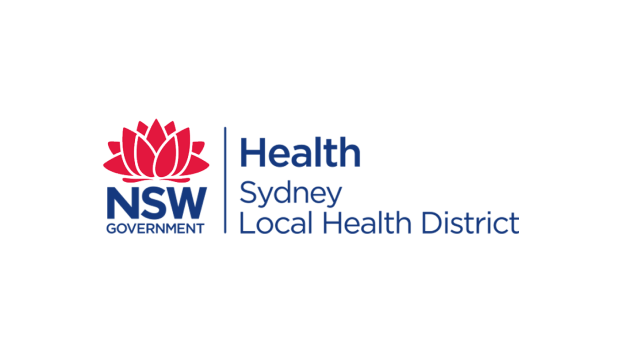
CUSTOMER STORIES
Sydney Local Health District Promotes Better Patient Outcomes for Mothers and Babies
Snowflake provides near-real time visibility into data about births that require medical intervention so the health district can reduce trauma and provide more comprehensive care.
KEY RESULTS:
55
Seconds to run data queries, down from one hour


Industry
Public SectorLocation
AustraliaAn analytics revolution that reduces maternal and infant risk during childbirth
Reducing infant and mother mortality is a global priority, and in Sydney, New South Wales (NSW), public health organizations are turning to data to address the issue.
One such organization is Sydney Local Health District (SLHD). SLHD employs about 13,000 people and is responsible for the welfare of 740,000 people within its boundaries, as well as many rural and remote residents and more than 1 million people who visit the district each day.
The district encompasses five hospitals in central and inner western Sydney and spans 126 square kilometers. SLHD and 14 other Local Health Districts are administered by NSW Health, an organization administered by the NSW Government Ministry of Health. Within NSW Health, eHealth NSW manages state information and communication technology infrastructure and systems that support health districts and other organizations. Each district manages its local systems and data.
NSW Health had relied on a legacy platform and infrastructure to meet health districts’ requests for datasets for analysis and reporting to improve patient care. However, this platform and infrastructure was complex and could not scale to meet the growing demand from local health districts, including the Women and Babies Service at SLHD, which delivers about 7,500 babies per year — the largest gynecology unit in NSW.
The platform could not support queries that extended beyond the previous three months’ worth of data, limiting the team’s ability to undertake deep analysis or identify trends. In addition, individual queries took more than one hour to run, compromising productivity and delaying access to valuable insights. Finally, building new queries to run against a range of data sources in the platform’s business intelligence “universe,” took months to complete due to the complexity of the environment.
This legacy environment made it extremely difficult for the Women and Babies team to pursue research projects to gain deeper insights into infant and mother mortality and reduce its incidence. The environment also hampered the team’s ability to report findings to the Ministry of Health.
Story Highlights
- Accurate, near real-time reporting driving immediate action: With the ability to generate near real-time reports into mortality and morbidity in just 55 seconds, the team can act on events as they happen rather than discuss them two months later.
- Reports run extensive datasets from many sources: SLHD can run queries against datasets over several years to support trend analysis and deeper insights — as opposed to only three months with its legacy platform.
- Faster time to build queries and provision requests: SLHD can provision new query requests in hours rather than the months it took in the previous environment.
Timely access to critical datasets and other sources essential to patient care
“As a clinician, I need timely access to datasets derived from electronic medical records and other sources to properly care for my patients,” explains Dr Ying Li, Clinical Lead in Women's Health - Health Informatics, SLHD. “Prior to Snowflake, we could not pull data from a range of sources for research and operational purposes and present it in an accessible format.
This meant we couldn’t leverage this data for research, improve our services or determine our requirements for the next five to 10 years, which, for planning purposes, was unacceptable.”
Ying adds, “With the introduction of the Snowflake AI Data Cloud in our Women & Babies service, we have significantly reduced PIBO data query processing times from one hour to less than a minute. Having this platform available supports our doctors and nurses in near real-time clinical decision-making, providing improved care for our patients.
With Snowflake, we can extend maternity data retrieval capabilities from three months to several years. This enhances longitudinal trend analysis, expediting clinical reporting, and improving maternal and neonatal outcomes.”

“The Snowflake AI Data Cloud met all our requirements and had the flexibility to deliver in a time-efficient manner.”
Dr. Ying Li
Running tailored reports that inform decision-making
The Women and Babies Service — and the wider SLHD and NSW Health organizations — needed a product that could interface seamlessly with existing systems and generate near real-time outputs and insights. The team also needed to be able to generate reports that were flexible, bespoke and detailed to obtain useful information and comply with NSW Health reporting obligations. The product also had to scale to manage growing data volumes and fulfill an increasing number of requests for datasets and reports.
“Further, we wanted a product that incorporated AI to give an intuitive feel to the system. The Snowflake AI Data Cloud met all our requirements and had the flexibility to deliver in a time-efficient manner,” Dr Li said.
With the Women and Babies Service as a lead use case for the deployment of the Snowflake AI Data Cloud throughout NSW Health, the project is yielding extremely positive initial outcomes. These represent encouraging progress against its objective of improving data accessibility and timeliness, enhancing efficiency of data delivery and monitoring, and improving maternity care quality and patient safety.
Validating data accuracy and running reports in just 55 seconds
The district has been able to validate the accuracy of reports generated from the Snowflake AI Data Cloud against outputs from its existing systems, giving the Women and Babies team confidence in using the system for its dataset analysis and decision-making requirements. With reports running in just 55 seconds, the team will be able to act on delivery trauma, mortality and morbidity data in near real-time rather than, as Dr Li says, “talking about them two months later.”
The team can now query and obtain insights from complete datasets rather than be restricted to the prior three months by infrastructure performance issues. This enables team members to identify longer-term trends and gain a more comprehensive and granular view of the incidence of deliveries that require intervention and the associated trauma, allowing them to make more informed recommendations about courses of action.
Adapting to new compliance requirements and pivoting reporting and analysis
SLHD is also positioned to respond quickly to requests for new reports derived from multiple data sources, with the Snowflake AI Data Cloud enabling it to provision them in hours rather than the months required in its legacy infrastructure. This will enable the Women and Babies team — and the organization more broadly — to adapt to changes in NSW Health compliance requirements and pivot analysis and reporting to promptly investigate newly identified trends in deliveries requiring intervention.
Empowering the next generation of medical professionals
The organization is now planning to utilize the Snowflake AI Data Cloud with Amazon Web Services to support the presentation of clinical research use cases. “Every year, junior doctors need to showcase their research cases, and that requires the extraction of data from our existing system,” said Saleem Ahmed Khan, Data Engineer, SLHD. “Some of the data fields are not available to them, and if we go with Snowflake, we can provide them with everything.”
“Every year, junior doctors need to present their research cases, and that requires the extraction of data from our existing system. Some of the data fields are not available to them, and if we go with Snowflake, we can provide them with everything.”
Saleem Ahmed Khan
Start your 30-DayFree Trial
Try Snowflake free for 30 days and experience the AI Data Cloud that helps eliminate the complexity, cost and constraints inherent with other solutions.


